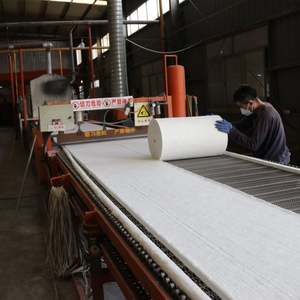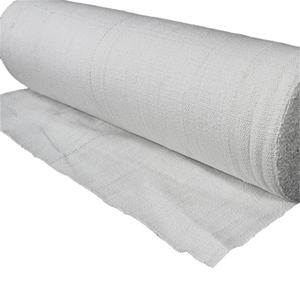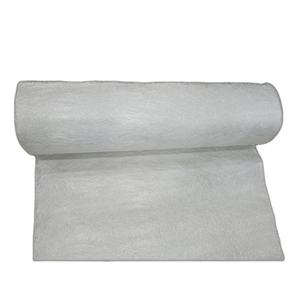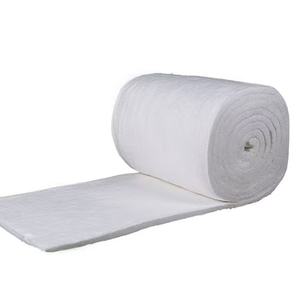Professional industry ceramic supplier, silicon nitride, silicon carbide, aluminum nitride and any other kinds of ceramics.
PRODUCT PARAMETERS
Description
Overview of 2018 factory-made ceramic fiber products
2018 factory-made ceramic fiber products is a lightweight, high-temperature insulation material composed primarily of alumina-silica. It is manufactured through a melting and spinning or blowing process, resulting in a flexible, wool-like textile. This material is engineered to provide exceptional thermal management, conserving energy and protecting equipment in extreme temperature environments across various industries.
Features of 2018 factory-made ceramic fiber products
-
Excellent Thermal Stability: Withstands continuous operating temperatures up to 1260°C (2300°F) and higher for certain grades, with minimal shrinkage.
-
Low Thermal Conductivity: Provides highly efficient insulation, reducing heat loss and improving energy efficiency.
-
Lightweight & Low Heat Storage: Offers low thermal mass, enabling rapid heat-up and cool-down cycles for improved process control and energy savings.
-
Thermal Shock Resistance: Highly resistant to damage from rapid temperature changes.
-
Excellent Flexibility & Resilience: Can be fabricated into blankets, boards, papers, and textiles to fit complex shapes and applications.
-
Good Chemical Stability: Resists attack from most corrosive agents, except strong alkalis and hydrofluoric acid.
Specification of 2018 factory-made ceramic fiber products
Ceramic fiber products are made from special materials. They handle very high temperatures well. These products are good for saving heat and protecting things from fire. They are light but strong. The fibers are thin and flexible. This makes them useful in many places.
The main type is ceramic fiber blanket. It comes in rolls of different thicknesses. You can cut it easily to fit. Blanket is used for lining furnaces or wrapping pipes. It keeps the heat inside. Another type is ceramic fiber board. It is harder and flat. Board is good for making furnace walls or fire doors. It holds its shape under heat.
Ceramic fiber modules are blocks. They fit together like puzzle pieces. Modules line big furnaces quickly. Ceramic fiber paper is thin and flexible like thick paper. It is used for gaskets or wrapping small parts. Ceramic fiber rope is like a thick string. It seals gaps around doors or pipes.
These products resist heat up to 2300 degrees Fahrenheit. They don’t burn. They don’t hold much heat themselves. This saves energy. They are also tough against chemicals. They won’t rot or rust. They are safe for people to use near heat.
Factories made these products to last. They use them in steel mills, glass factories, and power plants. They line kilns and ovens. They protect equipment from fire. They are easy to install. Workers can cut and shape them without special tools. They are clean and don’t make much dust. This is better for health.
You need to handle them carefully. The fibers can be itchy. Wear gloves and a mask when cutting. Follow the safety instructions. This keeps everyone safe. The products do the job well. They save money on fuel. They protect expensive machines. They are a good choice for high heat work.
Applications of 2018 factory-made ceramic fiber products
Ceramic fiber products were important heat-resistant materials in 2018. Factories made them into different shapes. People used them in many hot places. They needed to stop heat and save energy. These products handled very high temperatures well.
Industrial furnaces used ceramic fiber a lot. They lined furnace walls and roofs. This kept the heat inside. It made furnaces work better. Workers installed ceramic fiber modules quickly. They saved time during furnace building. Kilns also relied on ceramic fiber. Pottery kilns and metal treatment furnaces used it. The fiber helped keep steady temperatures. This was good for making quality products.
Heat treatment equipment needed strong insulation. Ceramic fiber boards and blankets worked well here. They protected the outside of hot machines. This made the workplace safer. Power plants used ceramic fibers too. Boilers and pipes got very hot. Ceramic fiber kept the heat in the system. This improved energy use. It helped plants run more efficiently.
Petrochemical plants faced extreme heat. Ceramic fiber products insulated reactors and piping. They resisted chemical damage. This was important for safety. The oil and gas industry used these fibers. They insulated equipment in refineries. Ceramic fiber handled the tough conditions there. Fire protection was another key use. Ceramic fiber materials added fire resistance. They protected buildings and structures. People used them in walls and doors.
Company Profile
Tanki New Materials Co.Ltd. focus on the research and development, production and sales of ceramic products, serving the electronics, ceramics, chemical and other industries. Since its establishment in 2015, the company has been committed to providing customers with the best products and services, and has become a leader in the industry through continuous technological innovation and strict quality management.
Our products includes but not limited to Aerogel, Aluminum Nitride, Aluminum Oxide, Boron Carbide, Boron Nitride, Ceramic Crucible, Ceramic Fiber, Quartz Product, Refractory Material, Silicon Carbide, Silicon Nitride, ect. please feel free to contact us.

Payment Methods
T/T, Western Union, Paypal, Credit Card etc.
Shipment Methods
By air, by sea, by express, as customers request.
5 FAQs of 2018 factory-made ceramic fiber products
What are factory-made ceramic fiber products?
Factory-made ceramic fiber products are insulation materials. They are created in controlled manufacturing settings. These products are designed to withstand extremely high temperatures. They come in various forms like blankets, boards, and papers. People use them to line furnaces and kilns. They help save energy by keeping heat inside.
Are ceramic fiber products safe?
Ceramic fiber products require careful handling. They can release tiny fibers into the air. Breathing in these fibers might be harmful. Workers need protective gear like masks and gloves. Good ventilation in work areas is crucial. Scientists found some older types could potentially cause cancer. Always follow safety instructions and local rules.
How long do ceramic fiber products last?
These products last a long time. Their lifespan depends on several factors. The maximum temperature they face matters a lot. How often the temperature changes also affects them. Chemical exposure can shorten their life. Proper installation helps them last longer. They resist heat very well and don’t break down easily.
How are ceramic fiber products installed?
Installing ceramic fiber products needs care. Workers cut the material to fit the space. They attach it using special pins or glue. Seams between pieces must be tight. This stops heat from escaping. Compression helps keep everything secure. Following the maker’s guide ensures it works right. A good installation improves energy savings.
Where are ceramic fiber products used?
These products are used in many hot industries. Steel mills use them in furnaces. Power plants use them in boilers. Foundries use them for melting metal. Petrochemical plants use them too. They insulate pipes carrying hot fluids. Any place needing strong heat protection might use them. They handle temperatures over 1000°C easily.
REQUEST A QUOTE
RELATED PRODUCTS

Best fire-resistant ceramic fiber insulation board.

High-temperature thermally conductive 1260 thermally insulating aluminum silicate ceramic board.

1800°C Refractory Ceramic Fiber Board High-strength Ceramic Fiber Insulation Board

Ceramic Fiber Blanket: 30mm Thick.

Customizable 1260°C thermal insulation ceramic fiber blanket for industrial furnaces



